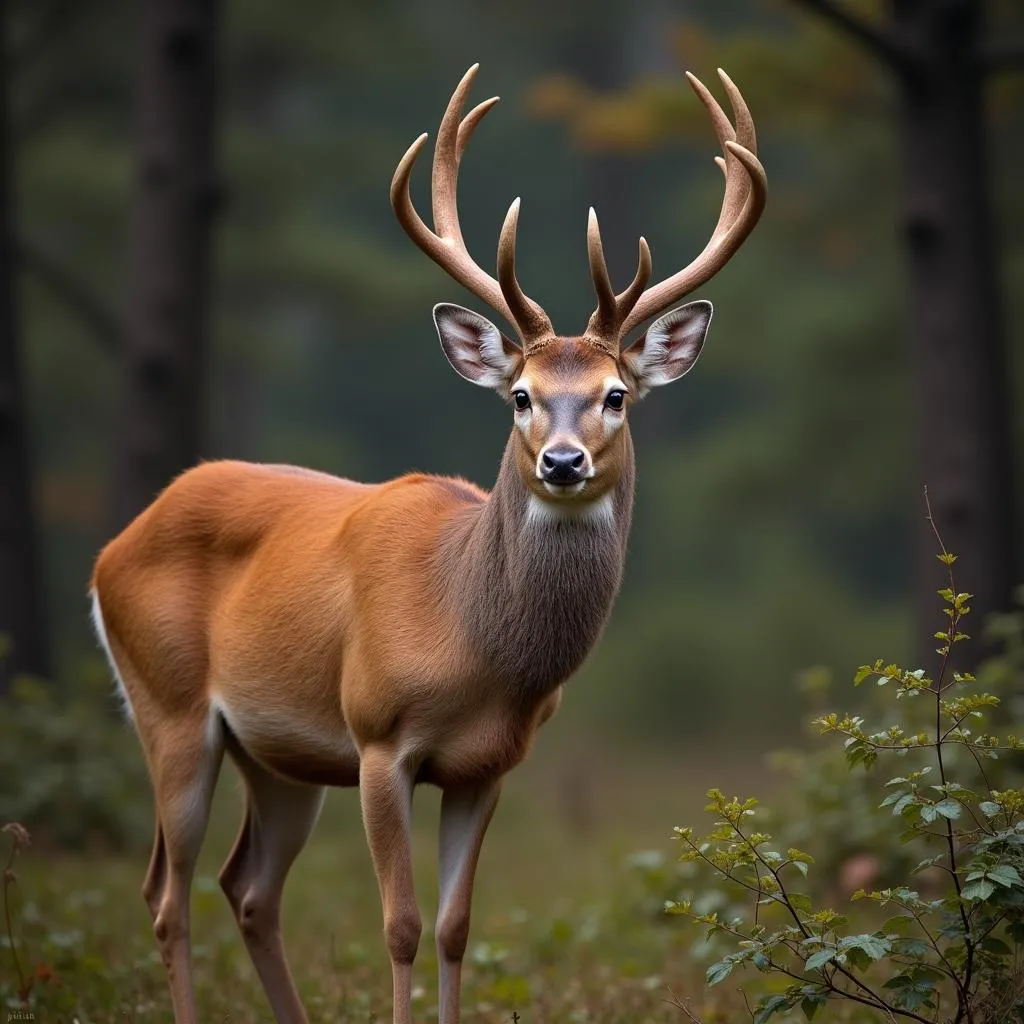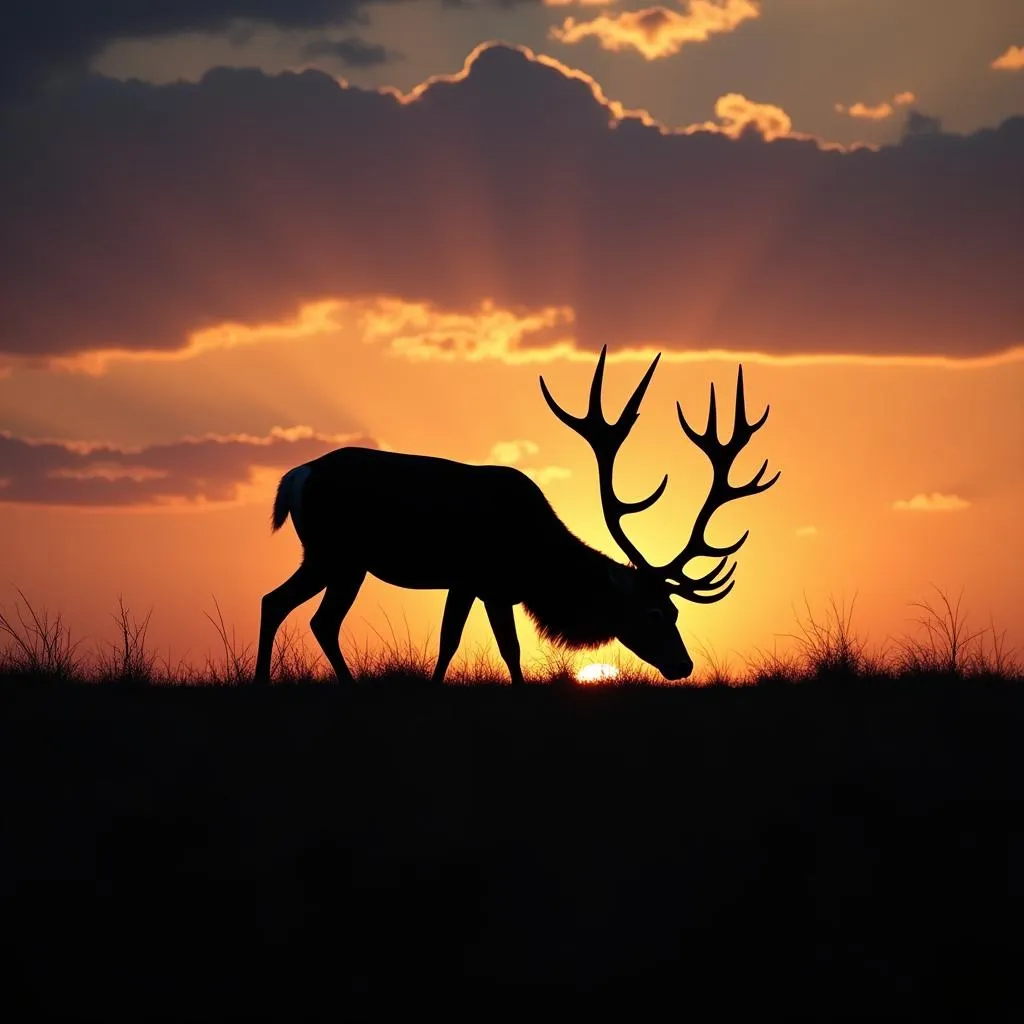Have you ever wondered what the world looks like through the eyes of a deer? Do they perceive the vibrant hues of a forest in all their glory, or is their reality painted in a more limited palette? The question of whether deer see colors has intrigued nature enthusiasts and hunters alike. Let’s dive into the fascinating world of deer vision and uncover the truth behind their color perception.
Deciphering Deer Vision: A Different Perspective
While humans possess trichromatic vision, meaning we have three types of color receptors (cones) in our eyes, deer have dichromatic vision. They only have two types of cones, limiting their ability to perceive the full spectrum of colors. This difference in eye structure plays a significant role in how deer see the world compared to us.
Seeing the World in Blues and Yellows
Deer are most sensitive to colors in the blue and yellow wavelengths. They can easily distinguish between blue and green shades, which is crucial for their survival in a predominantly green environment. This ability allows them to detect predators camouflaged amongst foliage and identify nutritious plants.
The Case of the Missing Reds
Unlike humans, deer have a limited ability to see red. To them, red appears more as shades of gray or brown, making it difficult to differentiate from the surrounding environment. This is why hunters often wear blaze orange during hunting season – the color stands out vibrantly against the natural backdrop, making them easily visible to other humans while remaining relatively inconspicuous to deer.
 Deer standing in a forest
Deer standing in a forest
Are Deers Color Blind? Not Quite.
While deer don’t see the full spectrum of colors visible to humans, labeling them as entirely “color blind” is inaccurate. Their dichromatic vision allows them to perceive a range of colors, albeit a more limited one. This adaptation serves them well in their natural habitat, enabling them to thrive despite their different visual perception.
The Evolutionary Advantage of Deer Vision
Deer have evolved to prioritize survival in the wild, and their vision plays a crucial role in this adaptation. Here’s how:
- Enhanced Motion Detection: Deer are highly sensitive to movement, even in low-light conditions. Their eyes are positioned on the sides of their heads, providing them with a wide field of view—almost 310 degrees—which helps them detect predators approaching from various angles.
- Superior Night Vision: Deer possess a high concentration of rod cells in their eyes, enabling them to see exceptionally well in low-light conditions. This adaptation is essential for navigating their surroundings and avoiding predators during dawn and dusk, their peak activity periods.
 Deer grazing at dusk
Deer grazing at dusk
“Deer vision has evolved to prioritize survival,” says Dr. Sarah Williams, a wildlife biologist specializing in ungulate vision. “Their ability to detect motion and see well in low light, coupled with their color perception, makes them incredibly well-suited to their environment.”
Practical Implications for Hunters and Nature Enthusiasts
Understanding how deer perceive colors can significantly impact how we interact with them in the wild.
- Hunters: Choosing hunting attire in colors that deer cannot easily distinguish, such as blaze orange, is crucial for safety and visibility amongst other hunters.
- Nature Enthusiasts: When observing deer in their natural habitat, opt for clothing in muted colors that blend with the surroundings. Avoid wearing bright reds or oranges, as these colors might startle them.
FAQs
Q: Can deer see the color white?
A: Yes, deer can see the color white. They perceive it as a bright shade, similar to how we see it.
Q: What colors can deer not see?
A: Deer have difficulty seeing red and orange hues. These colors appear as shades of gray or brown to them.
Q: Are deer color blind?
A: Deer are not entirely color blind. They have dichromatic vision, meaning they can see some colors but have a limited range compared to humans.
Seeking Colorful Inspiration?
Do you want to learn more about how animals perceive the world around them? Or perhaps you’re looking for expert advice on incorporating vibrant colors into your home?
Contact Color Box Hà Nội today! Our team of color specialists is dedicated to providing you with the knowledge and inspiration you need to create stunning and welcoming spaces.
Call us at 0373298888, email us at [email protected], or visit our showroom at 86 Cầu Giấy, Hà Nội. Our team is available 24/7 to assist you.
Let us help you unlock the transformative power of color!

